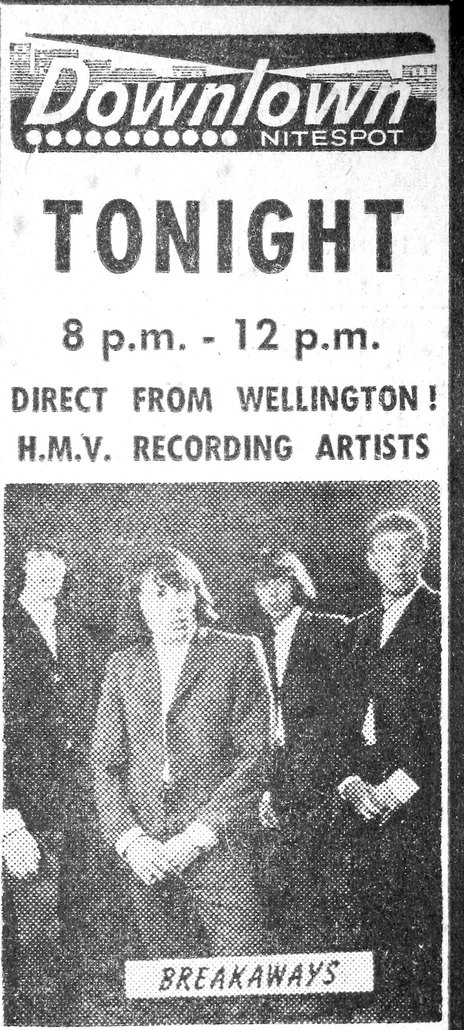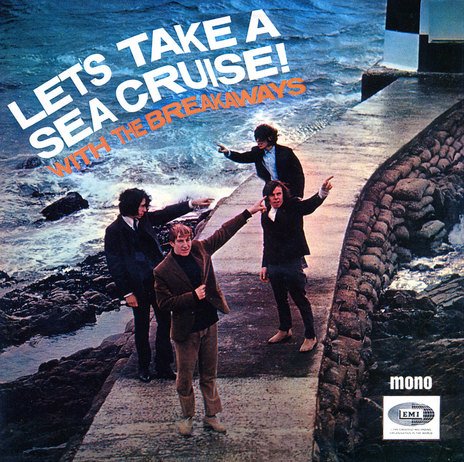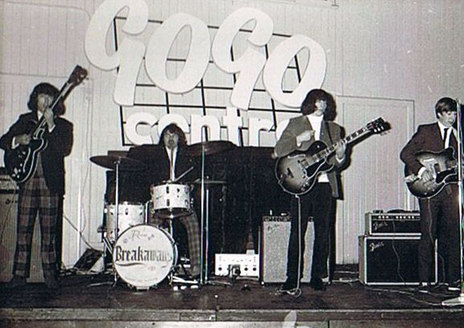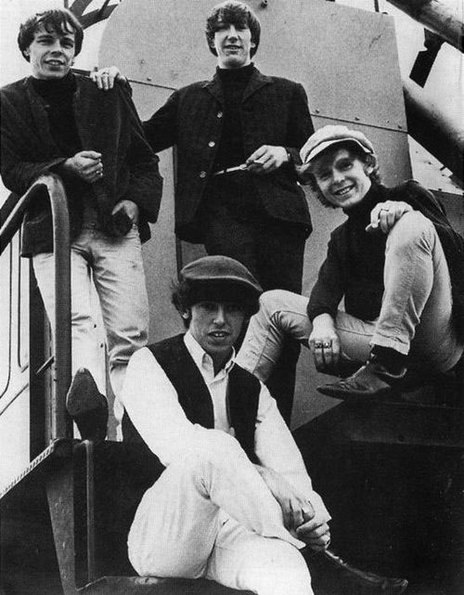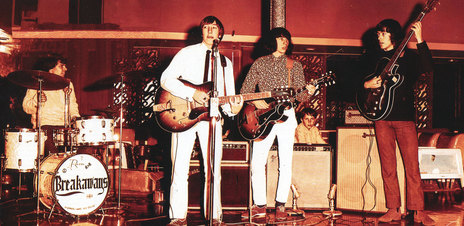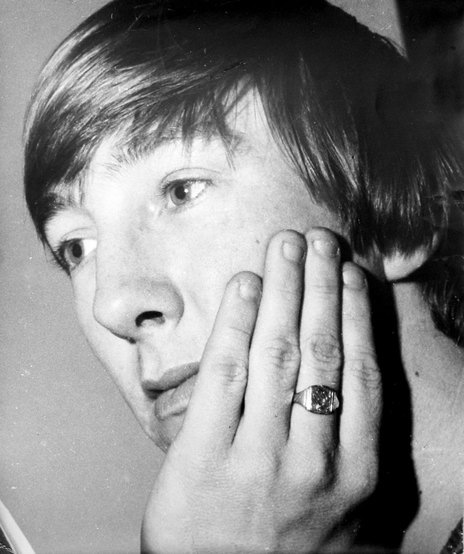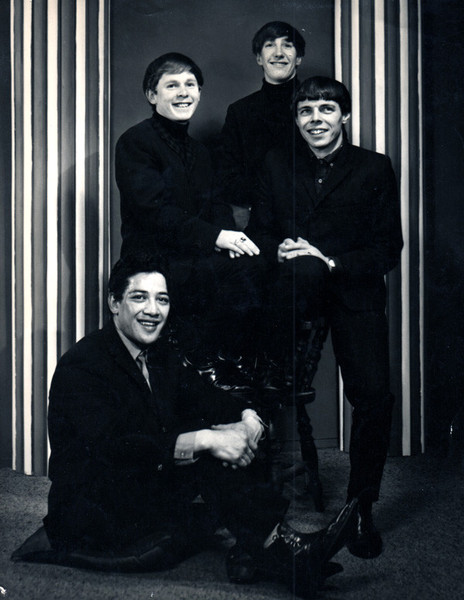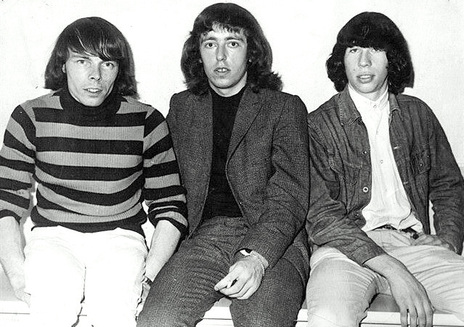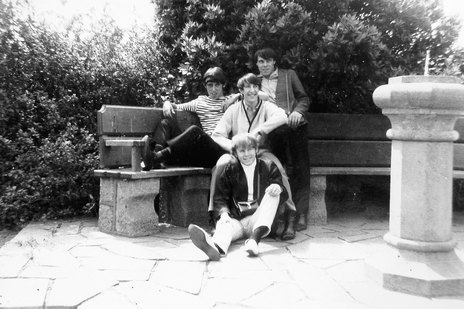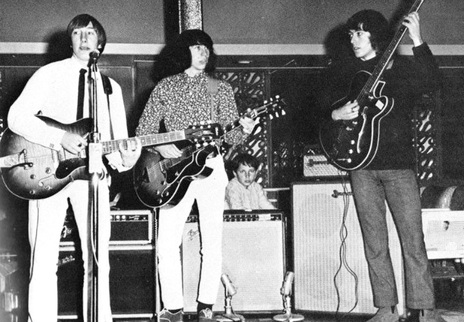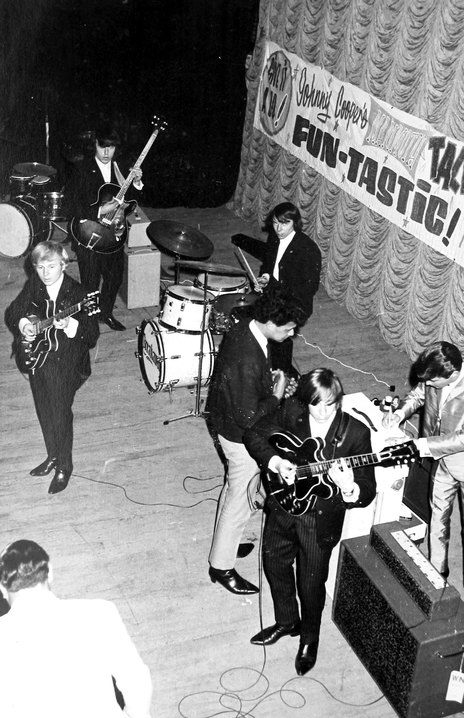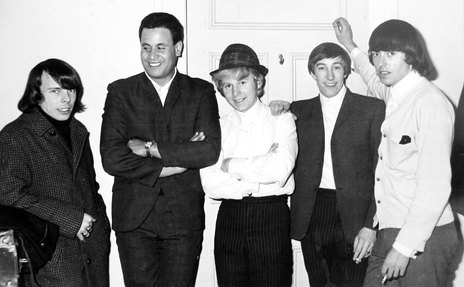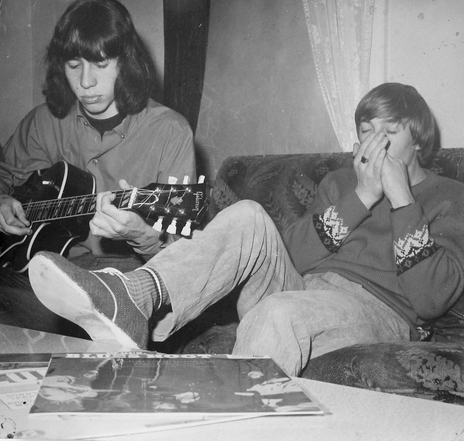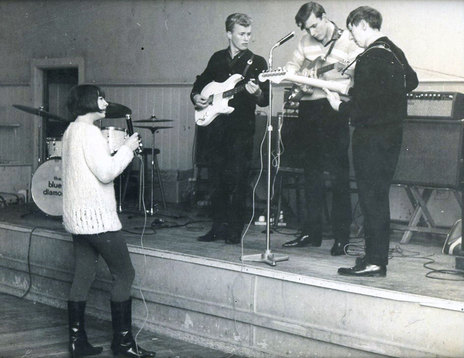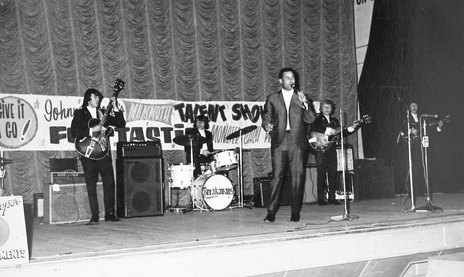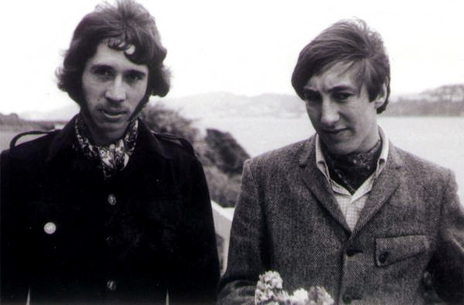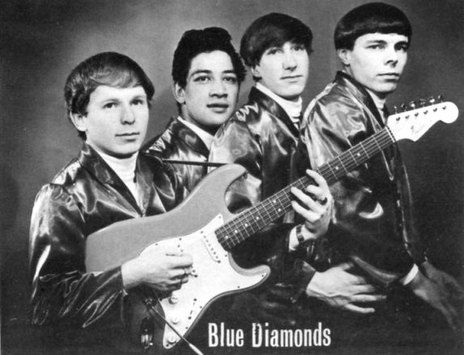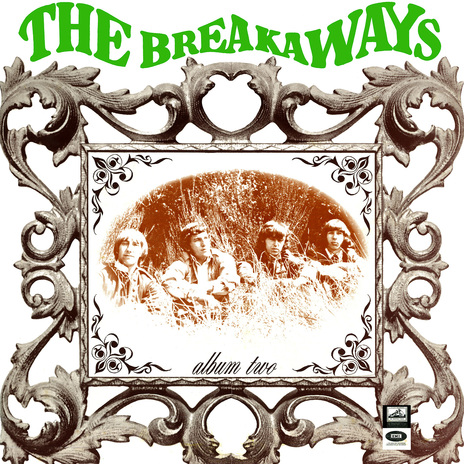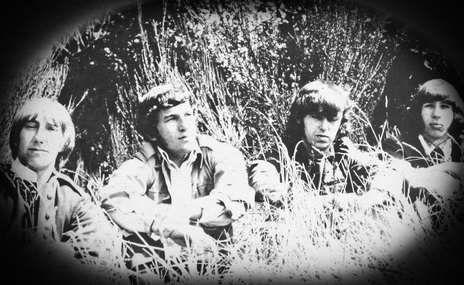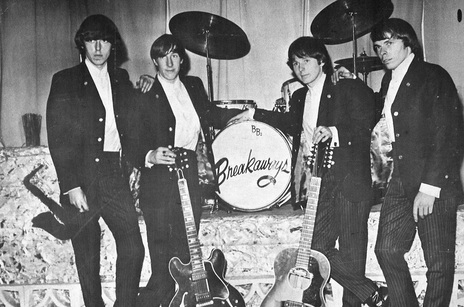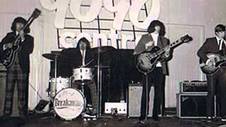Midge Marsden: “We were picking up a lot of songs from the American sailors that came in to port. We were the playing the Mexicali and the United States navy icebreakers would come in and they’d be in port for weeks at a time. They’d all club out. It was the first time I’d seen a lot of black people in one hit.
“They invited us down to the ship. It’d be early in the morning and they’d have these jukeboxes of stuff we never heard – Chuck Berry and Bo Diddley, John Lee Hooker, soul stuff – we’d get these records and take them home, and tape them and learn them the next day. We’d be playing them that night – the hottest sounds from America. The other bands would be asking where we got them. It was very competitive as to who got the new songs first.”
The Breakaways’ sets were further fortified by their signing to HMV Records in early 1965. Bryan Beauchamp: “HMV would arrive at our flat with a box of records that they weren’t going to release in New Zealand until we’d had a listen to them. We’d pick out a dozen or more to have a crack at live and announce them as “The latest release from England.”
If it wasn’t their tough new sounds that were getting them noticed, it was their ever-lengthening hair and stylish mod gear. When they returned home to New Plymouth in early 1965 “for a short rest from amplified chords, buzzing microphones and cold coffee”, they were undoubtedly on the rise. John McBeth in the Taranaki Sports Post noted that the group who’d left “un-noticed, had climbed to success in New Zealand’s land of shaggy hair and the big beat.”
In Levin, Bari was attacked by a fan who cut off some of his hair, and normally reserved Foxton locals swarmed the stage.
Bari and The Breakaways had appeared on the hot Let’s Go TV show, performing The Kinks’ ‘All Day And All Of The Night’, picked up a rising pop manager in Tom McDonald, and opened the Lower Hutt Teenarama, also playing around Wellington at the Hideaway, the Wellington Teenarama and the Sorrento, and out in the surrounding provinces in Palmerston North, Foxton, Otaki and Shannon as a featured act on Johnny Cooper’s popular talent shows. The welcomes were raucous. In Levin, Bari was attacked by a fan who cut off some of his hair, and normally reserved Foxton locals swarmed the stage.
In January 1965, they were off to Christchurch for a two week stint at the Safari, where The Breakaways struck up a strong friendship with kindred spirits, Chants R&B.
Midge Marsden: “We lived in Christchurch for a few months. Did a residency there and we’d hang out with the Chants as much as possible. We were group brothers. They dug what we were doing too, as an R&B band.” R&B fans at the Chants’ cellar club hangout, The Stage Door, were treated to several impromptu Breakaways shows.
The next month, they were booked to play the Taranaki section of the Let’s Go tour with fellow Taranaki boy Lew Pryme and The Pleasers. Better still, they’d signed to HMV Records and their first disc (recorded only as a demo and released in March 1965), a clean, clipped version of The Who’s first single ‘I Can’t Explain’ and a version of The Kinks’ first single, ‘Long Tall Shorty’ was out. They promoted ‘Long Tall Shorty’ on Wellington Television’s Teen Scene show shortly after.
The embryonic beat group “with a weakness for slow chugging blues and wistful ballads”, who left Taranaki in late 1964 without a bass player, were now on the cusp of local pop stardom. Lead guitarist Bari Gordon and bassist Dave Orams were a long way from New Plymouth dance band The Nite Lites, the band they’d both cut their musical teeth on. The distance to the Blue Diamonds, the beat band Bari formed in 1964 to rev up the audience and play behind the featured artists such as Dinah Lee, Tommy Adderley and John Hore on Johnny Cooper’s talent shows, was less.
When the line-up settled on Bari (lead guitar), his sister’s boyfriend, guitar novice, Midge Marsden, and Auckland drummer Bryan Beauchamp, they were only a steady bass player away from a solid unit. Tim Nuku and Colin Lambert had been tried and dropped by the time Bari secured a December 1964 opening at a Phil Warren dance in Wellington. Dave Orams was up for it. Time for a name change to The Breakaways, as suggested by popular soloist Tommy Adderley, soon amended to Bari and The Breakaways.
With R&B breaking big-time in the charts in 1965, Bari and The Breakaways secured more work and kudos from being on top of a trend before it broke. “Better than ever – wild and unpredictable,” said their ad for the Hide-A-Way in Victoria Street, Wellington. Out in the suburbs, particularly R&B strongholds Wainuiomata and the Hutt Valley, The Breakaways were packing them in. Further out in provincial Wairarapa and Manawatu, they were experiencing a localised form of pop stardom.
Beauchamp: “In Wairarapa, we became an overnight sensation. Every night it was packed. They went totally berserk in Masterton. Our records went straight to the top of the hit parade there. We were huge in Hawera and Taranaki.”
A new single appeared in October 1965, a sharp version of the Huey "Piano" Smith-penned ‘Sea Cruise’ backed with ‘Tough Enough’, a hard R&B tune.
They also found time to back a number of HMV solo artists on disc, including Lew Pryme.
A new single appeared in October 1965, a sharp version of the Huey "Piano" Smith-penned ‘Sea Cruise’ backed with ‘Tough Enough’, a hard R&B tune. It was the band’s biggest hit, described by Marsden as “our finest hour".
In December 1965, Midge Marsden was called up for three months of compulsory military training, making the news pages of The Dominion in the process. The bad news kept coming. Bari decided to leave to get married. There had also been tensions in the group over money, musical direction and the desire of Beauchamp and Orams, and to a lesser extent Marsden, to further mine the earthier sounds of R&B. Bari had always been a pop man. He bowed out with ‘Old Man Mose’, a Swinging Blue Jeans album track and tribute to jazz pianist Mose Allison [earlier recorded in 1935 by Louis Armstrong and his Orchestra].
With Midge out of action for three months, The Breakaways reverted their name, and recruited 17-year-old Palmerston North guitarist Dave Hurley, late of Palmerston North’s Saints.
Beauchamp: “We were starting to develop a heavier R&B sound style. Bari didn’t have the feel for it. We’d heard Dave Hurley with The Saints in Palmerston North. He had the real feel, the Chuck Berry riffs.”
With their first album half-completed and Beauchamp handling lead vocals from behind the drums, the three-piece Breakaways headed for Nelson and a resident season in the popular South Island city and resort playing the Top Twenty Coffee Lounge, Wednesdays 6pm to 12 pm.
It wasn’t a good time for long-haired musicians to be playing the provinces. Dave Orams: “We got a hard time from police, truckies. We were asked to leave our rental house. The neighbours didn’t like having long-haired musicians next door. So we were sleeping on the floor in the coffee bar. The police saw us climbing up the back stairs one day, and said: “If you’re staying here, you’re in big trouble.”
"These big burly truckies with spanners and black woolly singlets jumped out, saying, 'If you don’t get your hair cut in a week, we’ll cut it for you.'"
– dave Orams
“We were sleeping in the car. Broke in a sports hall one night and slept under gym mats. Then we were walking down the street one day and these big burly truckies with spanners and black woolly singlets jumped out, saying, 'If you don’t get your hair cut in a week, we’ll cut it for you.'”
They moved south to Christchurch, playing a return date at The Safari Room, followed by shows in Timaru, Oamaru and Dunedin. In May 1966, they started recording the rest of their first album Let’s Take a Sea Cruise! with The Breakaways, which would include Bari-era recordings. It was an interesting mix of tracks reflecting the group’s R&B passions, Beauchamp and Orams' offbeat taste for the Everly Brothers, and a Dave Orams original, ‘All For One’, which he also sang.
The next month, they were back in HMV studios recording the backing for Murray Marsden (ex-Countdown) on ‘Its A Crying Shame’/‘Lipstick Traces’, a service The Breakaways also provided for female vocalist Gwynn Owen.
On the live front, they continued impressing and progressing but stalled just before the big time. They were one of the biggest bands in the biggest scene in New Zealand, but still Auckland remained elusive. Even with their records in the Auckland hit parades, The Breakaways were still unable to break through the Auckland-Wellington pop divide.
They played as far up the island as Te Awamutu with “singing compere Bari Gordon” and at the Starlight Ballroom in nearby Hamilton in September, promoting their latest single, ‘A Travelled Man’ backed with ‘Perhaps I’ll Settle Down’. Back in Wellington, Lew Pryme, then working as a journalist for the Truth, checked out The Breakaways current attire and was impressed. “Their stage makeup is as mod as Carnaby Street. They have stage suits made from outlandish tartan checks and bell-bottomed trousers tailored from Union Jack patterns.”
The Breakaways' second HMV studio-recorded album was near complete. In December, they released their first original as the topside of a single ‘Despair’, written by Dave Orams and Bryan Beauchamp on Orams’ parents’ piano and backed Dene Hunter on a cover (of Them’s version) of Paul Simon’s ‘Richard Corey’.
Bryan Beauchamp, who sang lead on most of the band’s records, was eyeing a solo career. He’d already had his first outing as a soloist at The Place (in inner-city Wellington) in November. He stuck around for three shows as lead vocalist while new drummer Doug Thomas of New Plymouth’s Rex and The Roadrunners fitted in (Thomas also played on two second album tracks), then the “little guy with the big sound” as he’d be billed, finally departed. He’d be missed, but he’d done everything he thought he could with the band. They’d stopped moving forward. They should really have gone to Australia, says Beauchamp now, but it never happened. Midge (long since honking away on blues harp) and Dave took over the vocals.
The Breakaways spent the Christmas season at Timaru in the South Island, ladding about with The Echophonics and The Boys. When they returned to Wellington, they finally inquired about the money they’d been making over the frantic previous two years. When it wasn’t accounted for to Dave Hurley’s satisfaction, he quit the band. In February, the Breakaways released their last single ‘Walk Right Back’ backed with ‘Baby, Please Don’t Go’.
After a brief break-up, they reformed in March 1967, with Tim Piper, late of Christchurch’s Chants R&B, on guitar. Dave Hurley soon returned, but The Breakaways were all but spent. They played a big Lower Hutt Town Hall Jamboree in April with Wellington’s top pop acts (and a solo Bryan Beauchamp) and in May, they finally lined up Auckland. The group knew that they had to break there to survive, but after a show at the Galaxie, and an appearance on TV pop show C’mon, they broke up instead. Their second album, The Breakaways, was released posthumously.
Bari Gordon, who’d been working as a promoter, died in a New Plymouth hotel room in January 1969, aged just 22. There were no suspicious circumstances.
Bryan Beauchamp died in February 2009, aged 67.
